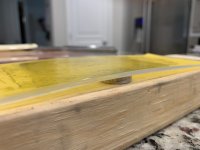So I have a few cheap vintage razors that are developing fairly wide areas of spine wear. Has anyone resorted to a bench/wheel grinder two get the contact area of the spine closer to the original dimensions? My concern is that these razors are developing a lot of stiction well before the edge is truly maxed out while honing.
Last edited:



